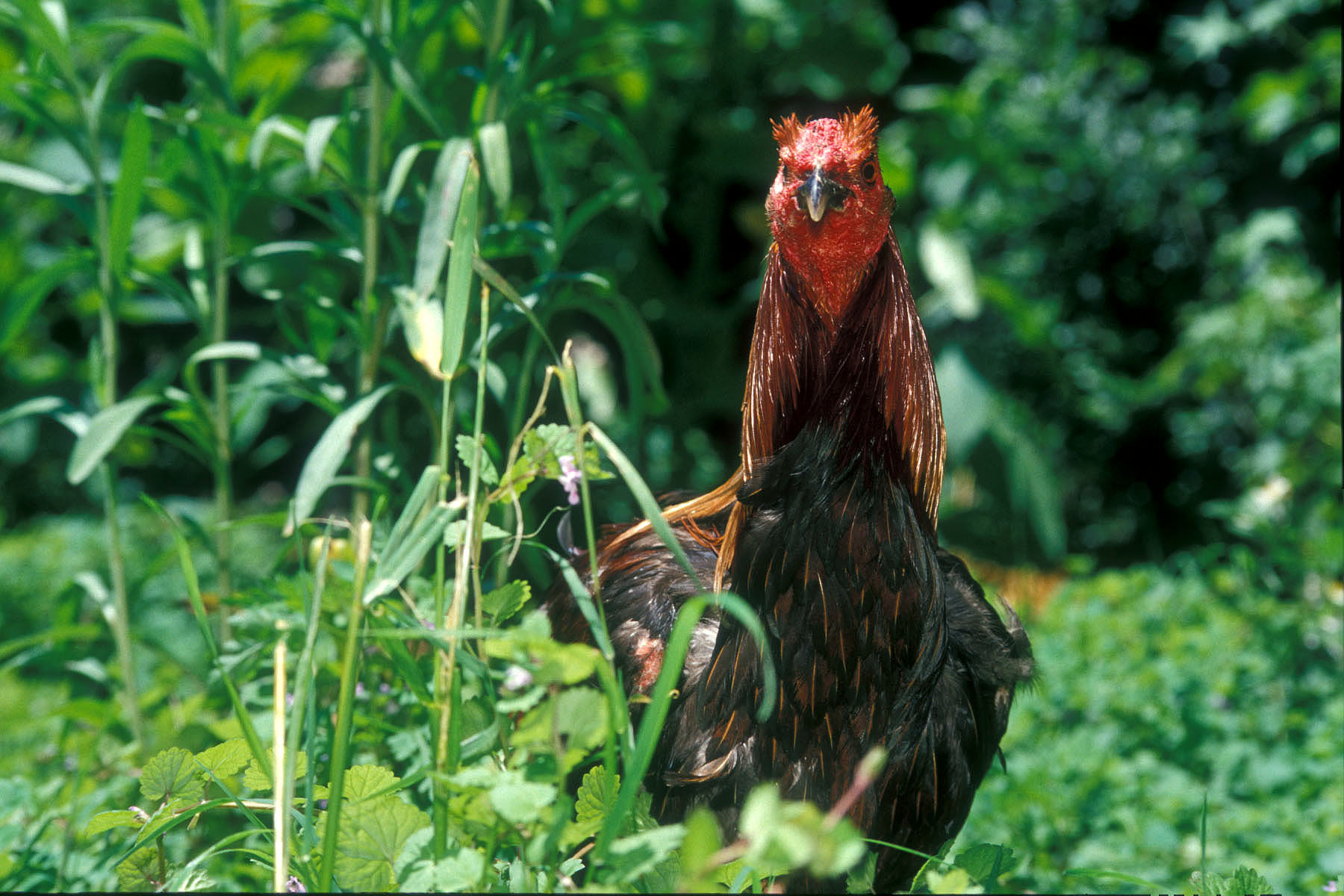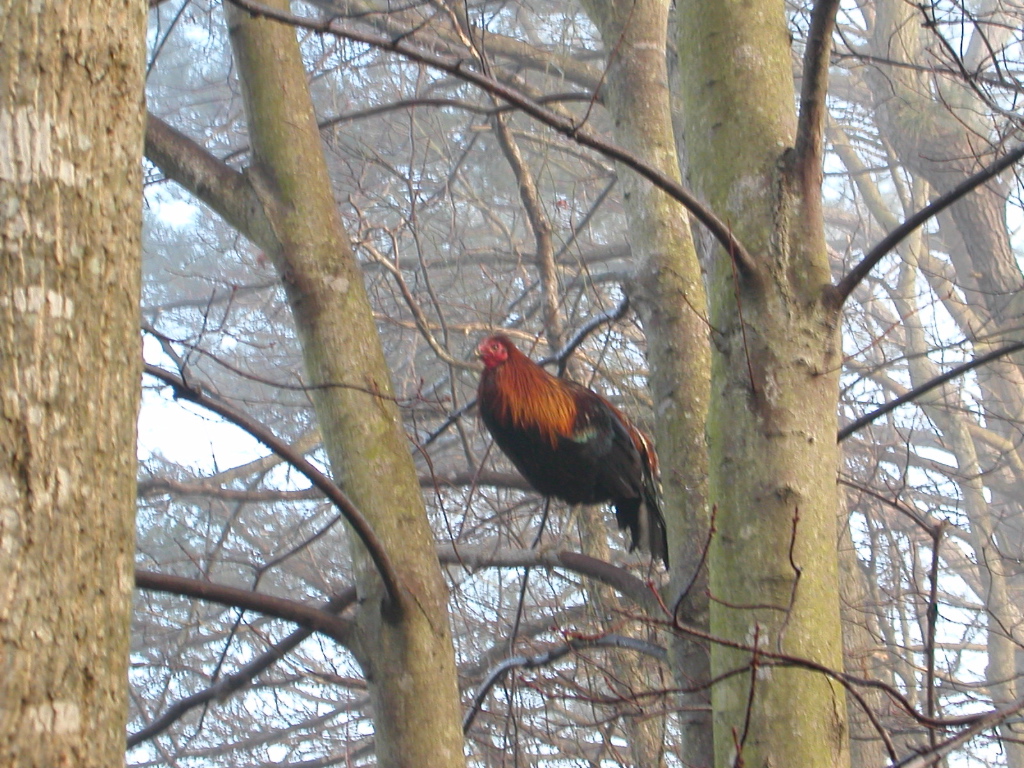“How do you keep the roosters from fighting?”
That’s the most frequent question we’re asked and also was the first question to come in when we asked newsletter subscribers what they want to know. It’s also an especially apt question this month, as we and other sanctuaries try to make room for hundreds of birds recently rescued from cockfighting. So, here’s a reprint of our basic guidelines for keeping the peace among roosters:
Principle #1: Let Birds Be Birds
Here at the sanctuary, everything we do for roosters and other birds is designed to allow them to construct and maintain their own communities, including resolving conflicts. Within flocks of wild junglefowl or feral chickens, roosters cooperate to watch for predators and other hazards, spreading themselves out along the perimeter of the foraging group. (Crowing evolved as a way to keep track of each other while doing so in dense forests.)

Of course conflicts sometimes arise, as they do in any community, but these are usually resolved without a bloody battle that would endanger the flock along with the combatants. Instead, roosters “argue” by means of stylized skirmishes that end when one bird “concedes” by either running away or standing in a slump-shouldered posture, allowing the winner to crow in victory. When two roosters just cannot get along, they avoid each other. One might go off on his own or join a different flock.
The terrible fights that are sometimes seen between roosters in captivity can usually be traced to situational problems, such as artificial concentration of resources, insufficient space, or lack of opportunity to take actions that resolve conflicts.
#2: Lots of Food in Lots of Places
Like us, chickens can be cranky when hungry and especially before breakfast. Of course, we always ensure that everybody has plenty to eat. But, to keep the peace, we go further than that. Multiple feed bowls spread out within each foraging area reduces any possibility of competition for access to food.
Additional feed, broadcast across pastures or dropped by the handful into interesting places, motivates roosters to spread out to search for food, as they would do if foraging in the forest habitats of their wild kin. By encouraging exercise and exploration, this increases overall well-being while reducing any chance of conflict.

#3: Lots of Spaces and Places
When roosters fight in captivity, it’s almost always because of insufficient space to spread out. (We tend to fight when we are cooped up together too.) Used to seeing images of chickens in small fenced yards, far from any trees, even the most well-meaning people often underestimate how much room these forest birds need to forge healthy communities.
Here at VINE, there’s plenty of room for roosters to retreat from conflicts. Any rooster who wants to fly up a tree or into the woods temporarily can do so. We also have multiple coops and foraging yards so that, if two roosters just cannot get along with each other, one can move to different digs.

Principle #4: Opportunities for Social Learning
Unfortunately, most chickens are not raised by their mothers within flocks. Thus, not only former fighting roosters but also former pets and birds rescued from factory farms arrive at the sanctuary without ever having learned the strategies chickens use to keep the peace within their communities.
Here at the sanctuary, newcomers have the opportunity to observe other roosters getting along, and this teaches them what they ought to have learned as chicks and adolescents.
Please note that these are just the ABCs of setting up a situation in which roosters can participate in communities as they would in wild or feral flocks. For roosters who have been traumatized by cockfighting or otherwise raised in ways that kept them from learning the lessons juvenile roosters learn in healthy flocks, a process of rehabilitation may be necessary.
Please also note that cockfighting persists despite decades of law enforcement efforts. We believe that efforts to undercut the roots of cockfighting in the places where it is popular will be more successful. To support such efforts, or simply to help us care for the dozens of former fighters and other roosters here at the sanctuary, donate today.




Leave a Reply